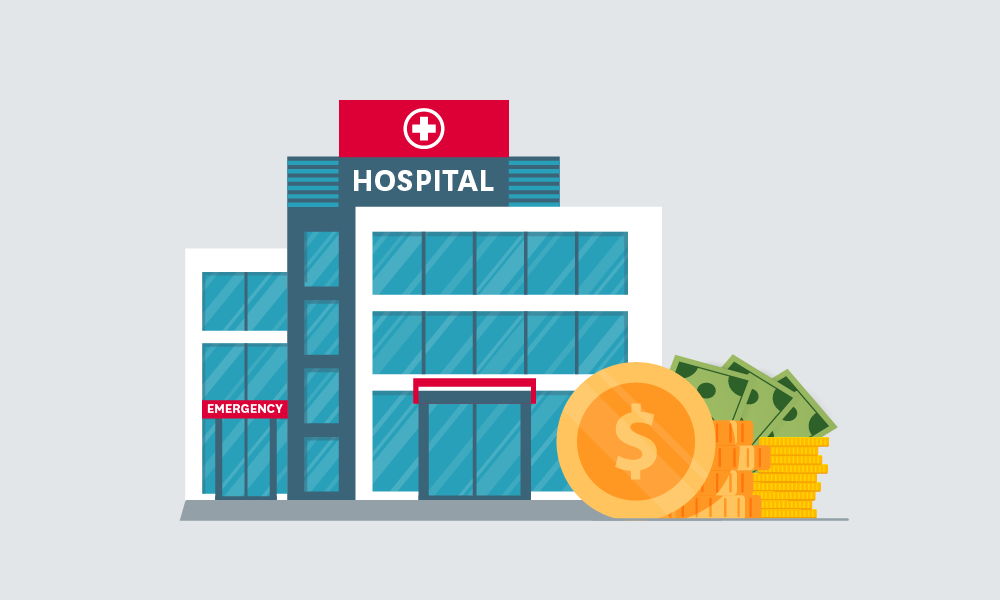The COVID-19 pandemic hammered California hospitals by disrupting their operations and pounding their finances. Nearly four years after the onset of the pandemic, profit margins for the state’s hospitals are still under pressure, and a few have even closed or filed for bankruptcy. MLK Community Hospital in Los Angeles is the latest facing serious trouble, warning that it could soon be unable to pay its bills.
To explain what is ailing hospitals, we turn to Glenn Melnick, professor and Blue Cross of California Chair in Health Care Finance at the USC Sol Price School of Public Policy. Melnick was the lead author in a recent study, published in Heath Affairs Scholar, which found that California’s hospitals still face a challenging financial outlook in the wake of the pandemic.
How did COVID-19 initially affect hospital finances?

Policymakers in most states, including California, requested that hospitals reduce the number of services they offered, including elective services, to ensure they had capacity for a surge of patients who were going to need hospital care. Hospitals, particularly those that had big outpatient surgery units, stopped seeing patients.
There were also supply chain interruptions, so they couldn’t get sufficient supplies even if they wanted to do surgeries. That reduced the volume of patients very quickly, and quite substantially. At the same time, many consumers were uncertain about what was going on and stayed away from hospitals.
Another shock that hit the system was that labor supply across the economy was disrupted. Many people either became sick and couldn’t work, or they pulled themselves out of the labor market. That created a tremendous supply and demand imbalance, and in order to get enough workers to come back into the market, labor costs went up.
Have those challenges persisted in the years since the COVID-19 outbreak?
The rate of wage increases for non-physician workers has continued above historical levels. Recent contract negotiations have resulted in fairly hefty wage increases, well above the types of increases we would have seen pre-COVID. We expect that the disruption has not fully calmed down, both in healthcare and the broader economy.
While patient volume has now rebounded, there was a change in the mix of patients, which appears to be permanent. Some patients who had formerly used the hospital for services just never came back for those types of services, but have been replaced, to some extent, by patients who were more severely ill. That has implications for staffing, for costs, for complexity of the mix of patients, and for management.
How are hospitals adapting?
As their revenue has been constrained, they’re being forced to adapt in ways that they’re not used to. Like what other businesses do, they have to cut their costs. We’re seeing reductions in non-nursing staff. California has a minimum nursing staff ratio law, so that takes a big chunk of labor costs outside financial managers’ control. They have to economize other parts of the business, so we’re seeing reductions in staff.
Will commercially insured patients face higher prices for hospital care?
We fully expect that negotiations between providers and health plans are going to be much more volatile. Hospitals that have the power will demand and get higher rate increases. More of the negotiating power has shifted towards the providers over time, so we fully expect that they will be able to assert higher price increases, which will end up with higher premiums for people covered by commercial insurance.
How widespread is this problem? Are most hospitals facing financial headwinds?
What we see is a more complicated landscape. There are some hospitals that don’t appear to have been affected by COVID at all, and they’ve emerged stronger. Then there’s those in the middle that suffered a little bit and still have not fully recovered but are not far below where they were before COVID. Then there’s about a quarter of the hospitals in California that are still under tremendous financial pressure.

Master of Health Administration
Shape Systems for Healthier Communities
USC’s MHA offers unparalleled academic and professional training for careers in health administration and policy.
Find Out MoreOne of the lessons we’ve learned from research and a policy perspective is that we have to look within the entire population of providers and start to differentiate, and possibly come up with different policies because they do operate under different conditions.
California offered emergency loans to 17 struggling hospitals. Was that the right policy response?
I think the instinct was correct. We as citizens want access to needed services, there was a shock to the system. and this government money is our money. I have not been able to study exactly how the policy was implemented. We’re going to have to wait and see whether those 17 hospitals that got money are still in business a year from now or two years from now.
California also passed a law that started the Office of Health Care Affordability. That office will have the authority to set targets for how much we as California should spend in healthcare. We should have had this office long ago, but it’s opening up at an interesting time because we are much more focused on the financial aspects of our healthcare system.





